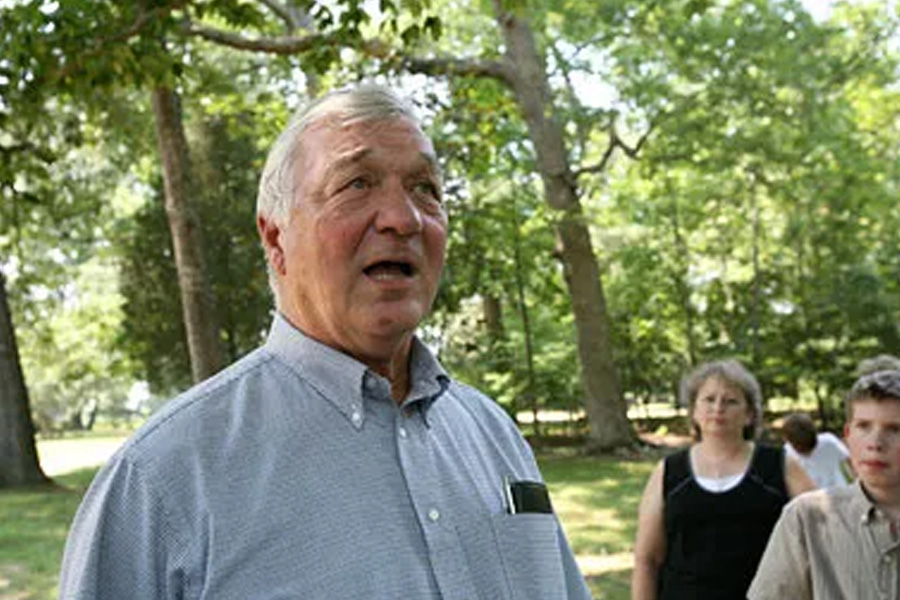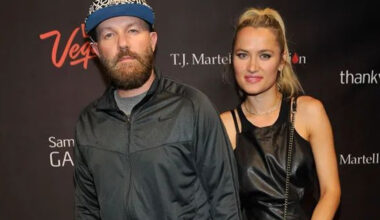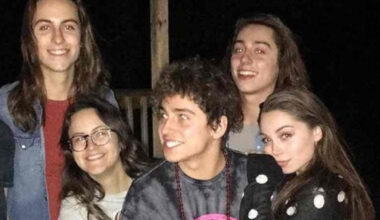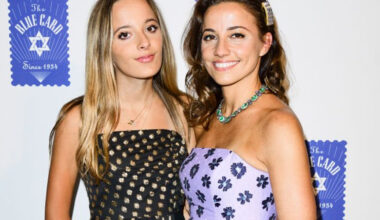Basic Information
| Field | Details |
|---|---|
| Full Name | Harrison Ruffin Tyler |
| Lifespan | November 9, 1928 – May 25, 2025 |
| Notable Distinction | Last surviving grandson of U.S. President John Tyler (1790–1862) |
| Occupations | Chemical engineer, entrepreneur, historic preservationist |
| Education | B.S. in Chemistry (1949), College of William & Mary; degree in Chemical Engineering (1951), Virginia Tech |
| Major Company | Co-founder of ChemTreat Inc. (1963), later acquired by Danaher (2007) |
| Key Preservation Projects | Sherwood Forest Plantation (acquired 1975); Fort Pocahontas (acquired 1996) |
| Philanthropy | $5 million gift and 22,000-document archive to William & Mary (2001) |
| Spouse | Frances Payne “Paynie” Bouknight Tyler (m. 1957; d. 2019) |
| Children | Julia Gardiner Tyler Samaniego (b. 1958), Harrison Ruffin Tyler Jr. (b. 1960), William Bouknight Tyler (b. 1961) |
| Parents | Lyon Gardiner Tyler (1853–1935) and Sue Ruffin Tyler (1889–1959) |
| Estimated Net Worth | Tens of millions (from business success and family estates) |
| Birthplace | Richmond, Virginia |
| Place of Death | Richmond, Virginia |
A Grandson Across 235 Years
Harrison Ruffin Tyler was a living timeline. Born in 1928, he was the grandson of President John Tyler, born in 1790—a span of 235 years stretched across just three generations by unusually late-life fatherhood. The marvel of that lineage—quill-and-parchment politics meeting the age of AI—turned him into a quiet cultural phenomenon, a man whose existence made history feel close enough to touch.
His father, Lyon Gardiner Tyler, arrived when President John Tyler was 63; Harrison came when Lyon was in his seventies. Such arithmetic of ancestry made headlines late in Harrison’s life, but for him it was simply family—portraits on the wall, letters in a trunk, and a duty to keep places and stories alive.
Roots and Early Formation (1928–1957)
Born November 9, 1928, in Richmond, Harrison grew up amid the shadows of the Great Depression and the glow of a household steeped in archives and argument. His father was a historian and former president of William & Mary; his mother, Sue Ruffin, descended from the powerful Ruffin line, kept meticulous family records.
He showed early promise in the sciences, moved through Virginia schools, and entered William & Mary in 1945. By 1949, he held a chemistry degree; in 1951, he completed a chemical engineering credential at Virginia Tech. He started his career in the burgeoning postwar industrial economy, where boilers, coolants, and corrosion were not abstractions but puzzles to be solved.
In July 1957, Tyler married Frances “Paynie” Bouknight, beginning a 62-year partnership rooted in family, work, and restoration.
Engineering and Enterprise: ChemTreat, 1963–2007
Tyler’s technical curiosity met entrepreneurial grit in 1963 when he co-founded ChemTreat Inc. The company specialized in water treatment—corrosion inhibitors, biocides, and smart chemistry that kept industrial systems running cleaner and longer. Over four decades he grew ChemTreat from a scrappy upstart to a national player with broad sector reach, including hospitals, utilities, and paper mills.
By 2007, ChemTreat had reported roughly $200 million in annual revenue and was acquired by Danaher, a marquee moment for a firm built on lab-bench rigor and field-tested results. Along the way, Tyler held a patent related to water treatment and, in 2000, implemented an employee stock ownership plan—an uncommon nod to shared prosperity in a consolidation-prone industry.
Career Milestones
| Year | Milestone |
|---|---|
| 1950s | Early roles in chemical manufacturing; work on water treatment innovations |
| 1963 | Co-founds ChemTreat Inc. |
| 2000 | Launches employee stock ownership plan |
| 2007 | ChemTreat acquired by Danaher Corporation |
Stewardship of Place: Sherwood Forest and Fort Pocahontas
If engineering was Tyler’s first language, preservation became his poetry. In 1975 he acquired Sherwood Forest Plantation—his grandfather’s home—and embarked on a painstaking restoration that married structural rescue with moral reckoning. He reinvigorated the main house, conserved artifacts, and supported archaeology that brought forward the lives of enslaved people whose labor underwrote the estate’s antebellum prosperity.
In 1996, he bought Fort Pocahontas, the Civil War earthwork at Wilson’s Wharf. A year later, he began sponsoring annual reenactments there, with programming that honored the Union victory and highlighted African American soldiers’ roles. His preservation wasn’t nostalgia; it was a bid for clarity, a commitment to telling the whole story.
Preservation Milestones
| Year | Site | Action |
|---|---|---|
| 1975 | Sherwood Forest Plantation | Acquisition and long-term restoration |
| 1996 | Fort Pocahontas (Wilson’s Wharf) | Acquisition for preservation |
| 1997–present | Fort Pocahontas | Annual Civil War reenactments and educational programs |
| 2001 | William & Mary | $5 million gift; 22,000-document archival donation; history department named in his honor |
Family Web: A Tapestry of Presidents, Planters, and Preservationists
Harrison’s family tree is a study in American contradictions—presidential power, planter wealth, Confederate zeal, and the long shadow of slavery. He confronted that inheritance with candor, investing in research and interpretation that broadened the narrative beyond great men and white-column facades.
He and Frances raised three children—Julia (b. 1958), Harrison Jr. (b. 1960), and William (b. 1961)—who became active stewards of the family legacy. His elder brother, Lyon Gardiner Tyler Jr. (b. 1925), an engineer and author, died in 2020, leaving Harrison the last grandson of a president whose life began in George Washington’s lifetime.
Family Overview
| Name | Relation | Life Dates | Notes |
|---|---|---|---|
| John Tyler | Grandfather | 1790–1862 | 10th U.S. President; married Julia Gardiner in 1844 |
| Julia Gardiner Tyler | Grandmother | 1820–1889 | White House hostess; New York lineage |
| Lyon Gardiner Tyler | Father | 1853–1935 | Historian; president of William & Mary |
| Sue Ruffin Tyler | Mother | 1889–1959 | Educator; family archivist; Ruffin descendant |
| Frances P. Bouknight Tyler | Spouse | d. 2019 | Partner in preservation; married 1957 |
| Lyon G. Tyler Jr. | Brother | 1925–2020 | Engineer, author |
| Julia G. Tyler Samaniego | Daughter | b. 1958 | Named for her grandmother |
| Harrison R. Tyler Jr. | Son | b. 1960 | Continues family stewardship |
| William B. Tyler | Son | b. 1961 | Oversees Sherwood Forest operations |
Philanthropy, Finances, and the Business of Memory
Tyler’s success endowed his stewardship. Proceeds from ChemTreat and family assets placed his net worth in the tens of millions, much of it directed toward conservation and archives. In 2001, he gave $5 million to William & Mary and transferred a 22,000-item trove of Tyler-Ruffin manuscripts—an indispensable cache for scholars of antebellum politics, the Civil War, and domestic life in the 19th century.
These were not vanity gifts but infrastructure for truth-telling. He understood that memory requires maintenance—like boilers and bridges—and paid for its upkeep.
Late Years, Public Awe, Quiet Exit (2012–2025)
Mini-strokes in 2012 and subsequent dementia slowed Tyler’s public rhythm; his sons increasingly managed the estates and programs he built. Yet even in retreat, his symbolic weight grew. News of his death on May 25, 2025, at age 96, triggered a wave of astonishment and affection: half a nation marveled that a man alive in the streaming era had a grandfather born in George Washington’s presidency.
That fascination, while understandable, risks reducing him to a trivia fact. Harrison Ruffin Tyler was more than a generational anomaly. He was an engineer who solved problems, a businessman who shared credit, and a preservationist who insisted that old places speak with new honesty. He took a complicated inheritance and, rather than polishing it into comfort, turned it into a classroom.
Dates That Tell the Story
- 1928: Born in Richmond, Virginia.
- 1949: Graduates from William & Mary (chemistry).
- 1951: Completes a chemical engineering degree at Virginia Tech.
- 1957: Marries Frances “Paynie” Bouknight.
- 1963: Co-founds ChemTreat Inc.
- 1975: Acquires Sherwood Forest Plantation for restoration.
- 1996: Buys Fort Pocahontas; preservation begins.
- 1997: Launches annual reenactments at Wilson’s Wharf.
- 2001: Donates $5 million and a 22,000-document archive to William & Mary; history department named in his honor.
- 2007: ChemTreat acquired by Danaher.
- 2012: Suffers mini-strokes; health declines.
- 2019: Frances Bouknight Tyler dies.
- 2020: Brother Lyon Gardiner Tyler Jr. dies.
- 2025: Dies in Richmond at age 96.
FAQ
Who was Harrison Ruffin Tyler?
He was an American chemical engineer, entrepreneur, and historic preservationist best known as the last surviving grandson of President John Tyler.
How could he be a president’s grandson in the 21st century?
Unusually late-life fatherhood across two generations created a 235-year span from his grandfather’s birth in 1790 to his own death in 2025.
What company did he found?
He co-founded ChemTreat Inc. in 1963, a water treatment firm later acquired by Danaher in 2007.
What historic sites did he preserve?
He acquired and restored Sherwood Forest Plantation and Fort Pocahontas, supporting research and public education at both sites.
When did he die?
He died on May 25, 2025, in Richmond, Virginia, at the age of 96.
What was his educational background?
He earned a B.S. in chemistry from William & Mary in 1949 and a chemical engineering degree from Virginia Tech in 1951.
Did he engage in philanthropy?
Yes, notably a $5 million gift and a 22,000-document archive to William & Mary that reshaped access to family and political papers.
Was his family involved in preservation work?
Yes, his children, especially William, have been active in overseeing Sherwood Forest and related programs.
Was he involved in any controversies?
No major personal controversies are associated with him, though he addressed the family’s historical ties to slavery through more inclusive interpretation.
How wealthy was he?
His net worth is estimated in the tens of millions, derived from business success and family estates.



